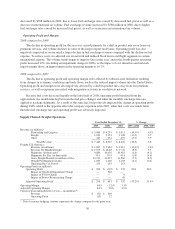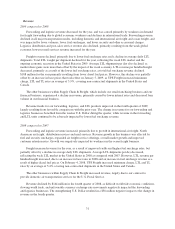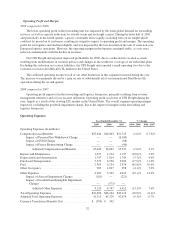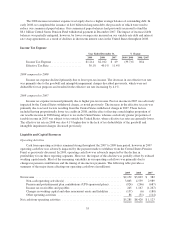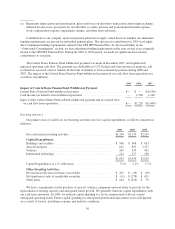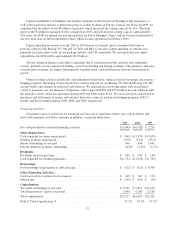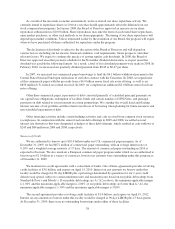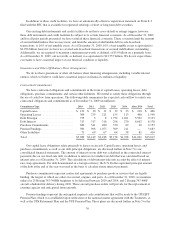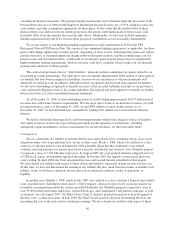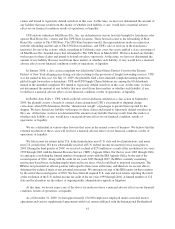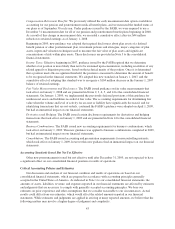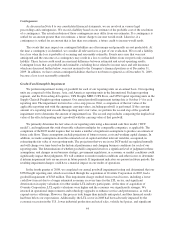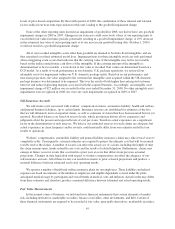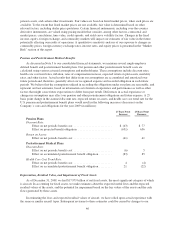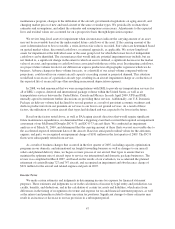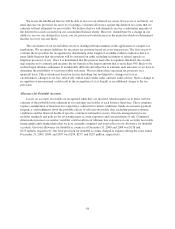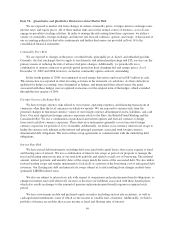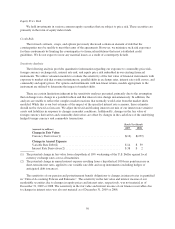UPS 2009 Annual Report Download - page 52
Download and view the complete annual report
Please find page 52 of the 2009 UPS annual report below. You can navigate through the pages in the report by either clicking on the pages listed below, or by using the keyword search tool below to find specific information within the annual report.consolidated financial statements. The pension funding requirements were estimated under the provisions of the
Pension Protection Act of 2006 and the Employee Retirement Income Security Act of 1974, using discount rates,
asset returns, and other assumptions appropriate for these plans. To the extent that the funded status of these
plans in future years differs from our current projections, the actual contributions made in future years could
materially differ from the amounts shown in the table above. Additionally, we have not included minimum
funding requirements beyond 2014, because these projected contributions are not reasonably determinable.
We are not subject to any minimum funding requirement for cash contributions in 2010 in the UPS
Retirement Plan or UPS Pension Plan. The amount of any minimum funding requirement, as applicable, for these
plans could change significantly in future periods, depending on many factors, including future plan asset returns
and discount rates. A sustained significant decline in the world equity markets, and the resulting impact on our
pension assets and investment returns, could result in our domestic pension plans being subject to significantly
higher minimum funding requirements. Such an outcome could have a material adverse impact on our financial
position and cash flows in future periods.
The contractual payments due for “other liabilities” primarily include commitment payments related to our
investment in certain partnerships. The table above does not include approximately $266 million of unrecognized
tax benefits that have been recognized as liabilities, because we are uncertain if or when such amounts will
ultimately be settled in cash. In addition, although we have recognized and disclosed unrecognized tax benefits,
we also have outstanding recognized tax benefits in excess of the recorded liabilities such that we do not believe
a net contractual obligation exists to the taxing authorities. Recognized and unrecognized tax benefits are further
discussed in Note 12 to the consolidated financial statements.
As of December 31, 2009, we had outstanding letters of credit totaling approximately $1.973 billion issued
in connection with routine business requirements. We also issue surety bonds as an alternative to letters of credit
in certain instances, and as of December 31, 2009, we had $501 million of surety bonds written. As of
December 31, 2009, we had unfunded loan commitments totaling $761 million associated with our financial
business.
We believe that funds from operations and borrowing programs will provide adequate sources of liquidity
and capital resources to meet our expected long-term needs for the operation of our business, including
anticipated capital expenditures, such as commitments for aircraft purchases, for the foreseeable future.
Contingencies
We are a defendant in a number of lawsuits filed in state and federal courts containing various class-action
allegations under state wage-and-hour laws. In one of these cases, Marlo v. UPS, which was certified as a class
action in a California federal court in September 2004, plaintiffs allege that they improperly were denied
overtime, and seek penalties for missed meal and rest periods, and interest and attorneys’ fees. Plaintiffs purport
to represent a class of 1,300 full-time supervisors. In August 2005, the court granted summary judgment in favor
of UPS on all claims, and plaintiffs appealed the ruling. In October 2007, the appeals court reversed the lower
court’s ruling. In April 2008, the Court decertified the class and vacated the trial scheduled for that month.
We have denied any liability with respect to these claims and intend to vigorously defend ourselves in this case.
At this time, we have not determined the amount of any liability that may result from this matter or whether such
liability, if any, would have a material adverse effect on our financial condition, results of operations, or
liquidity.
In another case, Hohider v. UPS, which in July 2007 was certified as a class action in a Pennsylvania federal
court, plaintiffs have challenged certain aspects of the Company’s interactive process for assessing requests for
reasonable accommodation under the Americans with Disabilities Act. Plaintiffs purport to represent a class of
over 35,000 current and former employees, and seek back-pay, and compensatory and punitive damages, as well
as attorneys’ fees. In August 2007, the Third Circuit Court of Appeals granted our petition to hear the appeal of
the trial court’s certification order. In July 2009, the Third Circuit issued its decision decertifying the class and
remanding the case to the trial court for further proceedings. We have denied any liability with respect to these
40


